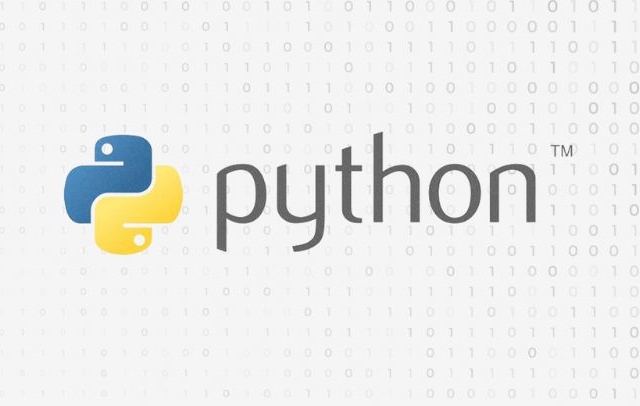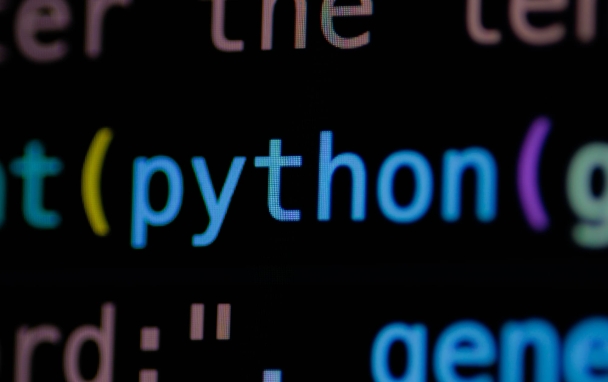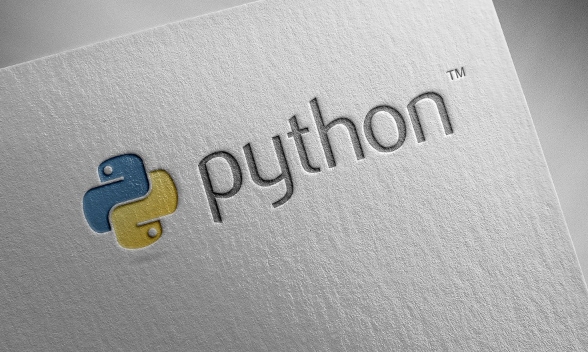In Python, custom classes need to implement __eq__ and __hash__ to support instances as dictionary keys or collection elements. 1.__eq__ is used to determine whether the objects are equal, and __hash__ returns an integer hash value for the hash table structure; 2. Both must be implemented based on the same attributes to maintain consistency; 3. Use __hash__ with mutable objects to avoid the inability to locate the object after modifying the attributes; 4. When only __eq__ is implemented without __hash__ __hash__ is not defined, the instance cannot be used as a dictionary key or collection element; 5. Python 3.7's dataclass can automatically generate these two methods through @dataclass(eq=True). Correct implementation ensures that instances with the same content are judged to be equal and have the same hash value, thus working properly in sets and dictionaries.

In Python, when you customize a class and want an instance of this class to be stored as a dictionary key or in a collection, you need to consider implementing the two methods __eq__ and __hash__ . They have a close relationship, and using it incorrectly may lead to unexpected problems.

When should __eq__ and __hash__ be used
If your class instances are used to compare (such as judging whether they are equal), or if you want to put them into data structures like set or dict , you must pay attention to these two methods.

-
__eq__controls whether two objects are "equal". -
__hash__returns an integer hash value of the object, used to quickly identify objects, especially in hash table structures (such as dictionaries and collections).
If these two methods are not overridden, the default behavior is based on the object's identity (id), that is, two different instances will not be considered the same even if the content is the same.
How to correctly implement __eq__ and __hash__
To ensure consistency, these two methods should be implemented based on the same properties. That is, if __eq__ compares a.name and a.age , then __hash__ should also use these two fields to calculate the hash value.

For example:
class Person:
def __init__(self, name, age):
self.name = name
self.age = age
def __eq__(self, other):
If not isinstance(other, Person):
return False
return self.name == other.name and self.age == other.age
def __hash__(self):
return hash((self.name, self.age))The benefits of doing this are:
- Two
Personinstances with the same name and age will be considered equal; - They also have the same hash value, so they work fine in a collection or dictionary.
Need to note:
- If your class is a mutable object (for example, properties can be modified), then be careful to implement
__hash__, because once the object is put into the set or used as a dictionary key and then modify the property will cause a change in the hash value, which will cause problems. - If you only implement
__eq__and not__hash__, your instance will not be used as a dictionary key or placed in a collection.
Common misunderstandings and precautions
Sometimes novices mistakenly think that just writing __eq__ is enough, but in fact this is not enough. Here are some easy places to get stuck:
-
__hash__is not implemented at the same time : this way the instance cannot be used as a dictionary key or collection element; - The properties used by
__eq__and__hash__are inconsistent : they will cause logical confusion, such as the two objects appear to be equal but have different hash values; - Implement
__hash__for mutable objects : If the object changes properties after being placed in the collection, it will never be found; - Forgot to return an integer :
__hash__must return an integer, otherwise an error will be reported.
Another small detail is: if you are using Python 3.7 and use dataclass , you can automatically generate __eq__ and __hash__ methods by setting @dataclass(eq=True) , eliminating the manual writing process.
Basically that's it. These two methods are not complicated by themselves, but it is easy to ignore some details in actual use, especially when it comes to hash structures. Just remember that equality and hash must be consistent, and most problems can be avoided.
The above is the detailed content of Python `__eq__` and `__hash__` methods. For more information, please follow other related articles on the PHP Chinese website!

Hot AI Tools

Undress AI Tool
Undress images for free

Undresser.AI Undress
AI-powered app for creating realistic nude photos

AI Clothes Remover
Online AI tool for removing clothes from photos.

Clothoff.io
AI clothes remover

Video Face Swap
Swap faces in any video effortlessly with our completely free AI face swap tool!

Hot Article

Hot Tools

Notepad++7.3.1
Easy-to-use and free code editor

SublimeText3 Chinese version
Chinese version, very easy to use

Zend Studio 13.0.1
Powerful PHP integrated development environment

Dreamweaver CS6
Visual web development tools

SublimeText3 Mac version
God-level code editing software (SublimeText3)
 How to handle API authentication in Python
Jul 13, 2025 am 02:22 AM
How to handle API authentication in Python
Jul 13, 2025 am 02:22 AM
The key to dealing with API authentication is to understand and use the authentication method correctly. 1. APIKey is the simplest authentication method, usually placed in the request header or URL parameters; 2. BasicAuth uses username and password for Base64 encoding transmission, which is suitable for internal systems; 3. OAuth2 needs to obtain the token first through client_id and client_secret, and then bring the BearerToken in the request header; 4. In order to deal with the token expiration, the token management class can be encapsulated and automatically refreshed the token; in short, selecting the appropriate method according to the document and safely storing the key information is the key.
 Explain Python assertions.
Jul 07, 2025 am 12:14 AM
Explain Python assertions.
Jul 07, 2025 am 12:14 AM
Assert is an assertion tool used in Python for debugging, and throws an AssertionError when the condition is not met. Its syntax is assert condition plus optional error information, which is suitable for internal logic verification such as parameter checking, status confirmation, etc., but cannot be used for security or user input checking, and should be used in conjunction with clear prompt information. It is only available for auxiliary debugging in the development stage rather than substituting exception handling.
 What are python iterators?
Jul 08, 2025 am 02:56 AM
What are python iterators?
Jul 08, 2025 am 02:56 AM
InPython,iteratorsareobjectsthatallowloopingthroughcollectionsbyimplementing__iter__()and__next__().1)Iteratorsworkviatheiteratorprotocol,using__iter__()toreturntheiteratorand__next__()toretrievethenextitemuntilStopIterationisraised.2)Aniterable(like
 What are Python type hints?
Jul 07, 2025 am 02:55 AM
What are Python type hints?
Jul 07, 2025 am 02:55 AM
TypehintsinPythonsolvetheproblemofambiguityandpotentialbugsindynamicallytypedcodebyallowingdeveloperstospecifyexpectedtypes.Theyenhancereadability,enableearlybugdetection,andimprovetoolingsupport.Typehintsareaddedusingacolon(:)forvariablesandparamete
 How to iterate over two lists at once Python
Jul 09, 2025 am 01:13 AM
How to iterate over two lists at once Python
Jul 09, 2025 am 01:13 AM
A common method to traverse two lists simultaneously in Python is to use the zip() function, which will pair multiple lists in order and be the shortest; if the list length is inconsistent, you can use itertools.zip_longest() to be the longest and fill in the missing values; combined with enumerate(), you can get the index at the same time. 1.zip() is concise and practical, suitable for paired data iteration; 2.zip_longest() can fill in the default value when dealing with inconsistent lengths; 3.enumerate(zip()) can obtain indexes during traversal, meeting the needs of a variety of complex scenarios.
 Python FastAPI tutorial
Jul 12, 2025 am 02:42 AM
Python FastAPI tutorial
Jul 12, 2025 am 02:42 AM
To create modern and efficient APIs using Python, FastAPI is recommended; it is based on standard Python type prompts and can automatically generate documents, with excellent performance. After installing FastAPI and ASGI server uvicorn, you can write interface code. By defining routes, writing processing functions, and returning data, APIs can be quickly built. FastAPI supports a variety of HTTP methods and provides automatically generated SwaggerUI and ReDoc documentation systems. URL parameters can be captured through path definition, while query parameters can be implemented by setting default values ??for function parameters. The rational use of Pydantic models can help improve development efficiency and accuracy.
 How to test an API with Python
Jul 12, 2025 am 02:47 AM
How to test an API with Python
Jul 12, 2025 am 02:47 AM
To test the API, you need to use Python's Requests library. The steps are to install the library, send requests, verify responses, set timeouts and retry. First, install the library through pipinstallrequests; then use requests.get() or requests.post() and other methods to send GET or POST requests; then check response.status_code and response.json() to ensure that the return result is in compliance with expectations; finally, add timeout parameters to set the timeout time, and combine the retrying library to achieve automatic retry to enhance stability.
 Setting Up and Using Python Virtual Environments
Jul 06, 2025 am 02:56 AM
Setting Up and Using Python Virtual Environments
Jul 06, 2025 am 02:56 AM
A virtual environment can isolate the dependencies of different projects. Created using Python's own venv module, the command is python-mvenvenv; activation method: Windows uses env\Scripts\activate, macOS/Linux uses sourceenv/bin/activate; installation package uses pipinstall, use pipfreeze>requirements.txt to generate requirements files, and use pipinstall-rrequirements.txt to restore the environment; precautions include not submitting to Git, reactivate each time the new terminal is opened, and automatic identification and switching can be used by IDE.






